
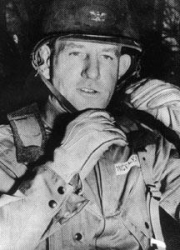 |
|
|
||
|
George Van Horn Moseley, Jr. 'Old Moe' |
||||
|
Graduate, U.S. Military Academy, Class of 1927 Engagements: • World War II (1941 - 1945) |
||||
| Biography: | ||||
|
George Van Horn Moseley, Jr. George Van Horn Moseley, Jr. was born on 4 January 1905 at Fort Sam Houston, TX, to George Van Horn and Alice Dodds Moseley. His father, then an officer in the 1st Cavalry Division, U.S. Army, later rose to become a Major General and Vice Chief of Staff of the Army during the Hoover Administration. Moseley grew up on Army posts and in Washington, DC, where he graduated from Western High School in 1922. He graduated from the U.S. Military Academy in 1927 and was commissioned as a Second Lieutenant in the U.S. Army. He subsequently served on various assignments, obtained a Masters Degree, taught English at West Point and served in Tientsin, China as a Company Commander with the 15th Infantry Regiment during the 1930s. It was during his World War II service with the 101st Airborne Division that Colonel Moseley came to be well known. Although Germany's airborne assault on Crete on 20 May 1941 sounded the death knell for the German airborne, American military planners were oblivious to the unacceptably high casualty rate suffered by the Germans. Instead, they focused on the tactical and strategic successes of the operation, noting that Crete had been captured entirely by an airborne force. The Japanese bombing of Pearl Harbor on 7 December 1941 triggered an acceleration of airborne planning and strategy. On 30 January 1942, the War Department hurriedly authorized the activation of four Army parachute regiments. A month later, on 2 March 1942, the 502nd Parachute Infantry Regiment (PIR) was activated at Fort Benning, GA, from the 502nd Parachute Infantry Battalion. Major Howell was promoted to Colonel but left that same month to command the parachute school at Fort Bragg, NC. He passed the Regiment's command to Colonel George Van Horn Moseley Jr. who came from a long line of West Point graduates. Like the other airborne regimental commanders of his day, Col. Moseley made enormous demands on his troops, as well as himself. His troops referred to him as 'Old Moe.' In July of 1942, the activation of two full airborne divisions, the 82nd and 101st, was ordered and the 502nd was assigned as a permanent unit of the 101st Airborne Division. Shortly after they became part of the 101st, the 502nd PIR moved from Fort Benning to join the rest of the Division at Fort Bragg. Through the rest of 1942 and into 1943, the 502nd PIR took part in a grueling training program, which consisted of individual, unit, and combined division training. During March of 1943 they took part in division maneuvers in Southern Pines, NC. This was followed by the Camden maneuvers which started on 23 May of that year. Shortly after the Camden Maneuvers the big Tennessee maneuvers were held. On 6 June 1944, D-Day, Col. Moseley's 502nd PIR was dropped into Normandy, France. On the Normandy drop, Moseley jumped from the lead aircraft of the four leading serials of planes. These carried the 502nd PIR and the 377th PFA Battalion. LTC Weisberg, the 377th Commanding Officer, was jumping right behind Moseley to coordinate artillery support in taking the 502nd's primary objective; the artillery battery near Saint-Martin-de-Varreville. Col. Moseley had a bad landing and broke his ankle on the jump. His bodyguards placed him in a wheelbarrow pushed by his orderly and, after receiving first aid, he established a moving Command Post. Despite being injured on the jump, Moseley refused to be evacuated and commanded his Regiment from a wheelbarrow for two days. [Colonel Moseley was part of the composite character played by actor John Wayne in the movie "The Longest Day."] LTC Mike Michaelis, Executive Officer of 502nd PIR, described some very erratic behavior by Moseley in Normandy and later claimed that Moseley had pulled a gun on him when he (Michaelis) refused to send a patrol on a suicidal assignment. Moseley said, "I'm in command here and I'm telling you what to do!" Michaelis replied "Not me sir, if you want that, you'd better relieve me." (Michaelis later stated: "He pulled his pistol and I had to dive to keep from getting shot.") When General McAuliffe observed Moseley circa June 8th, the Colonel was in sight of the retreating Germans, with his leg in a cast. 'Old Moe' was barking commands from his wheelbarrow. In spite of his pleas to remain in action, Moseley received a direct order to relinquish command to his XO, LTC Mike Michaelis. After two years of commanding and training the 502nd PIR, Col. Moseley was ordered to leave Normandy only two days after entering battle. Major General Maxwell Taylor, Commanding General of the 101st Airborne Division, overruled Moseley's objections to being relieved. In summing up, LTC Michaelis (who retired as a four-star general) later said: "Moseley was a superb, tough trainer. He accepted no excuses. He could strike terror into the heart of God. Exactly what you needed in preparation for combat. Let me put it this way. He wasn't popular, but he gave the outfit a damned fine discipline. All you had to do was whisper and the men came on the run. But he wasn't a good tactician." It was true that Col. Moseley made enormous demands of himself and those under him. Veterans of the 502nd, justly proud of their combat record, insisted much credit was due their commander, despite the fact that he lasted only a few days in Normandy. 'Old Moe' never did return to the 101st Airborne Division. After convalescing in England, he returned to the U.S. to command the 2nd Parachute Training Regiment at Fort Benning, GA. Moseley retired disabled from the Army in 1945. Medals, Awards and Badges Legion of Merit In Retirement In 1946, Colonel Moseley retired to Grafton, VT, where he had owned a home for many years. In the postwar years, he attended the Naval War College and served as Commandant of Cadets at Norwich University. And, because of his expertise on China, Moseley returned during the Korean War to serve as a civilian aide in MacArthur's Tokyo Headquarters of the Far East Command. Death and Burial Colonel George Van Horn Moseley, Jr. died on 6 December 1976 in Montague, MA. He is buried at Old South Cemetery in Montague, Franklin County, MA. |
||||
| Honoree ID: 3294 | Created by: MHOH | |||
Ribbons
Medals
Badges
Honoree Photos
 | 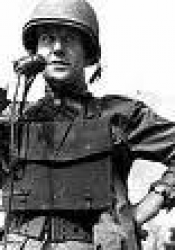 |  |
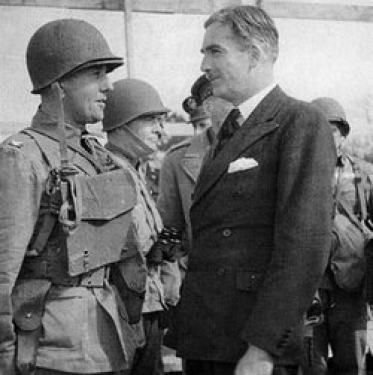 | 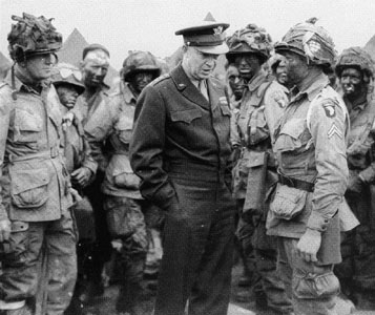 |
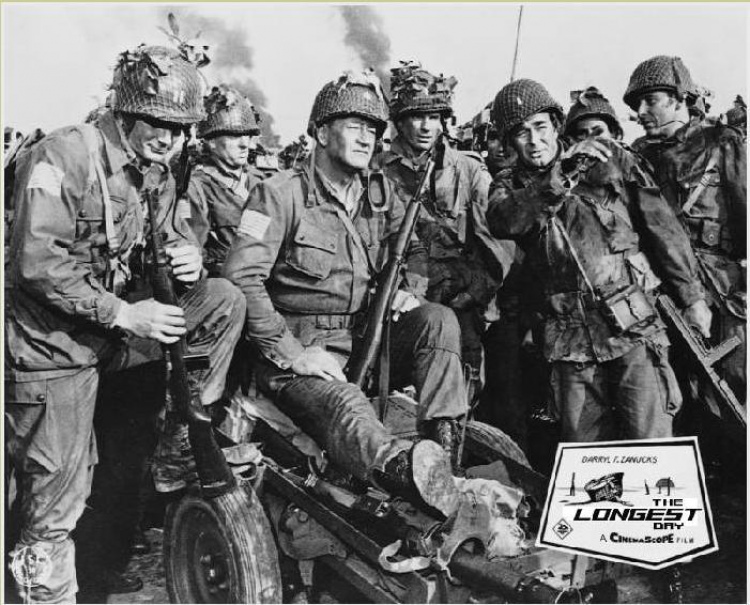 |


